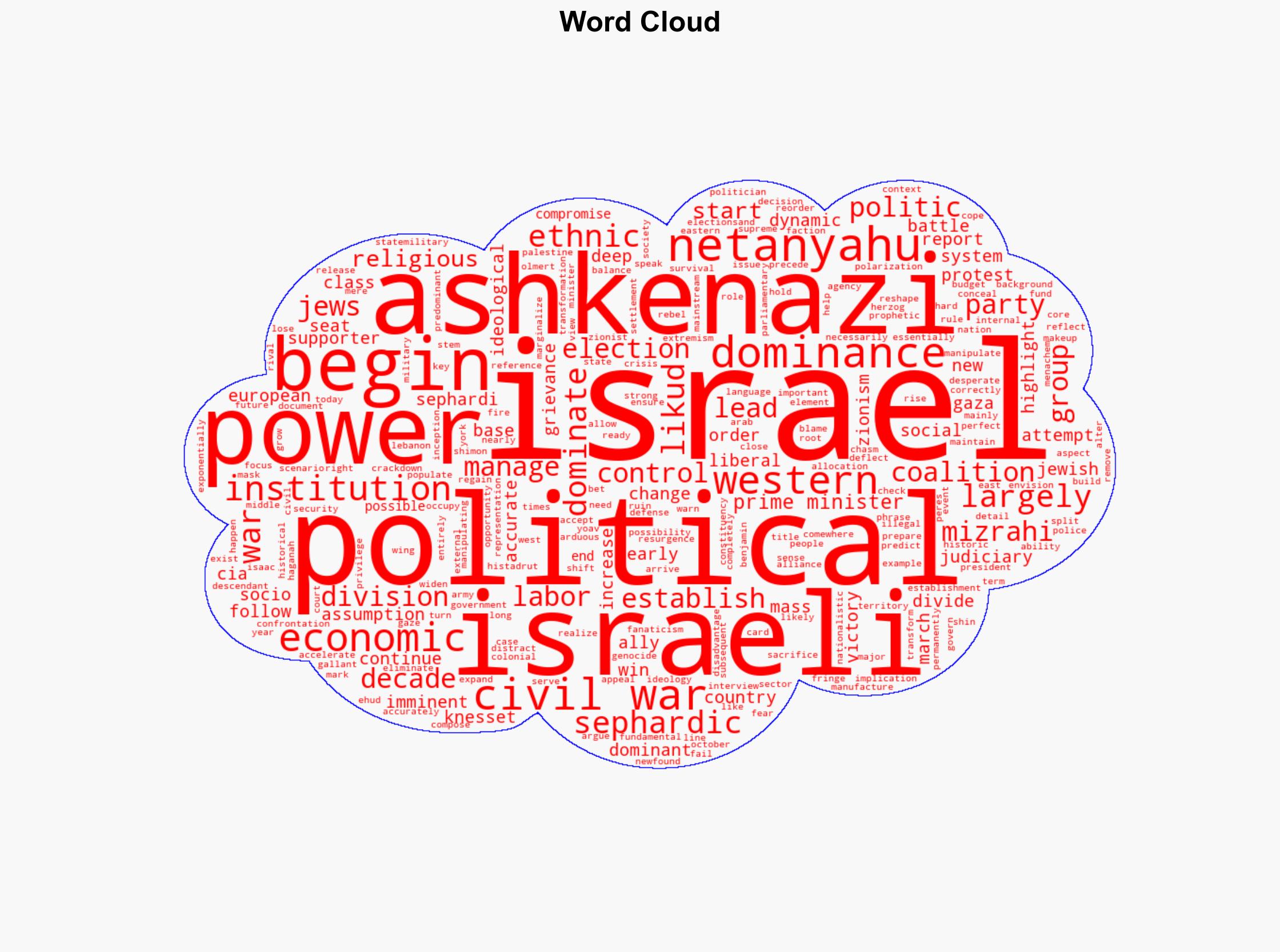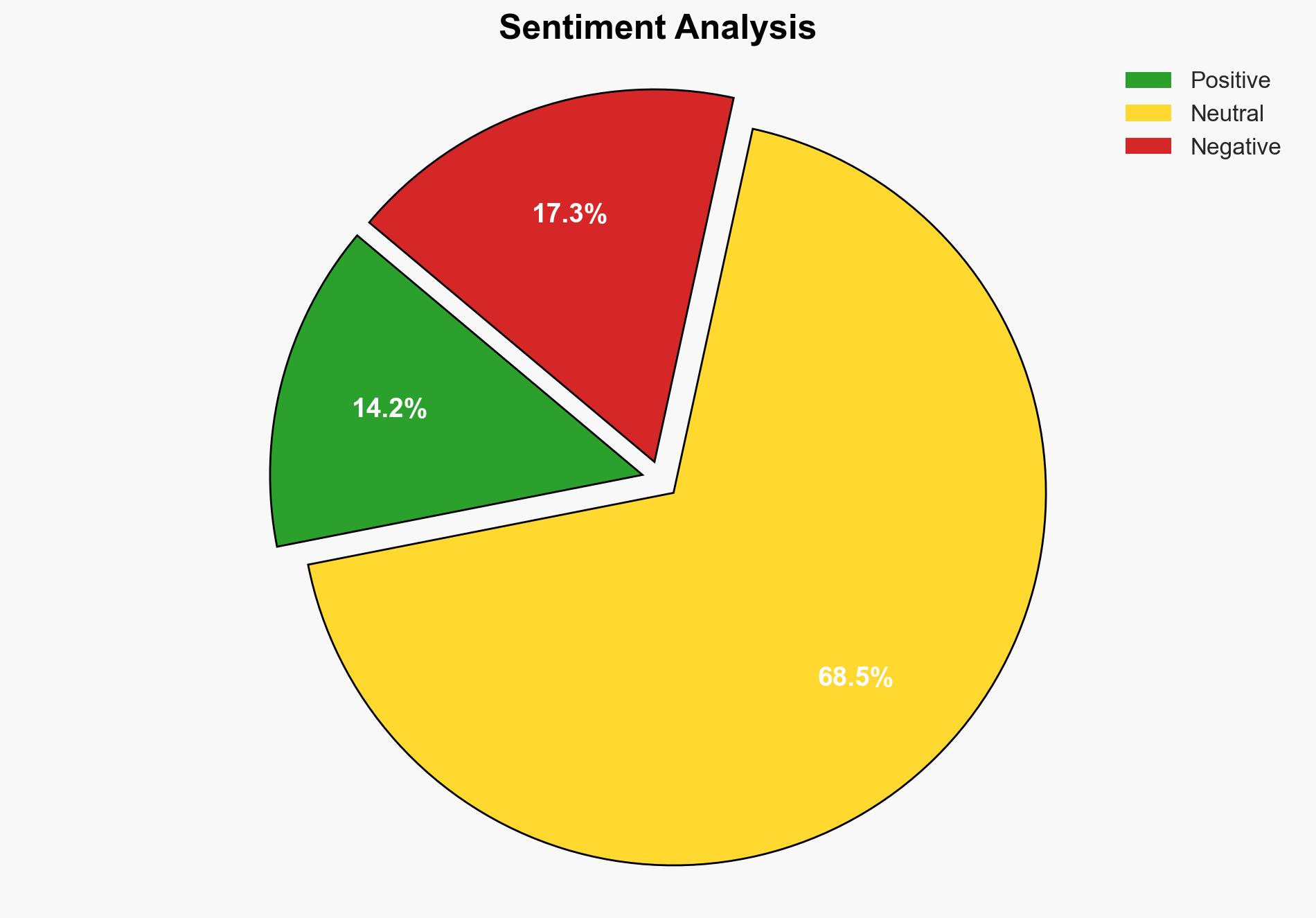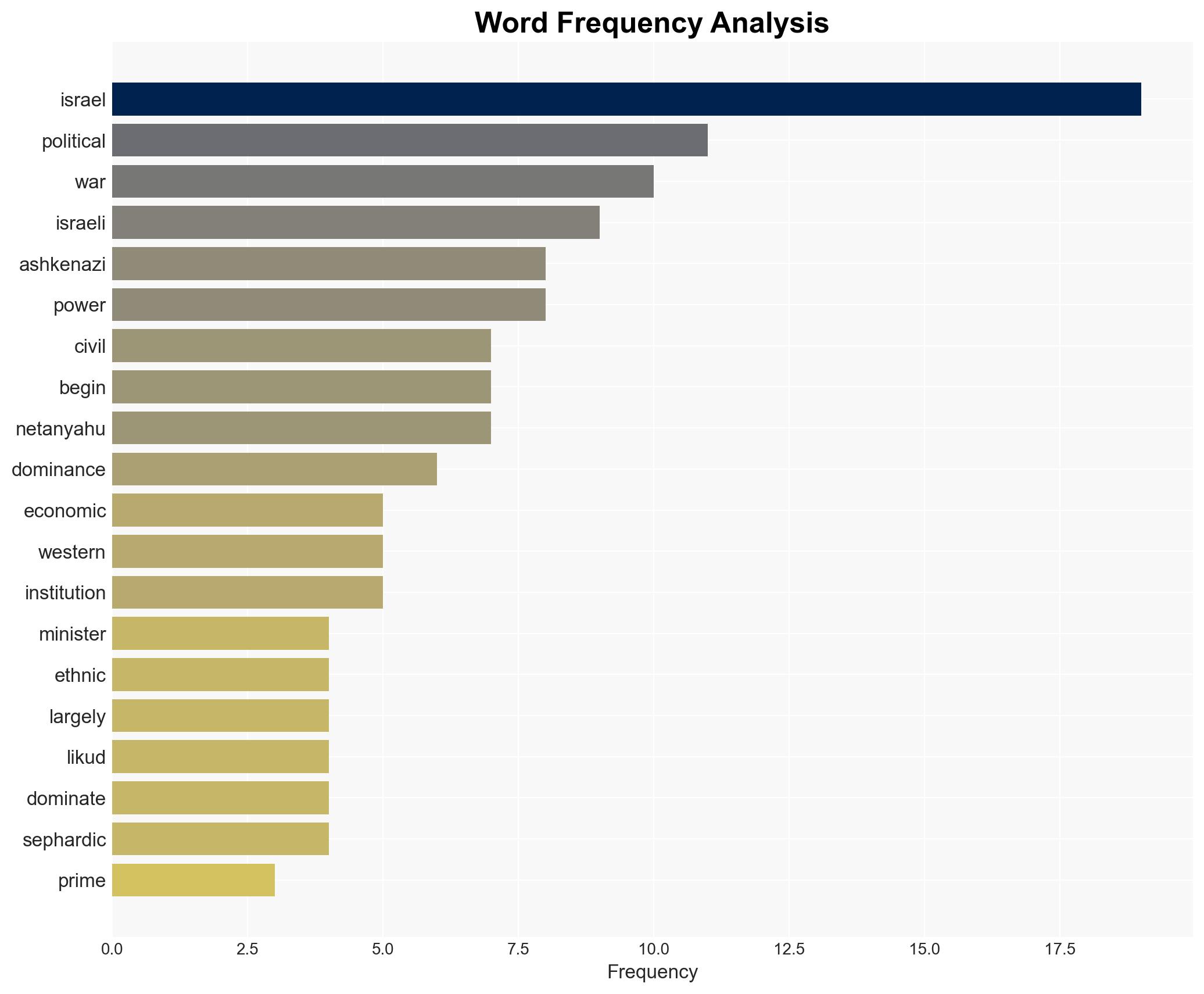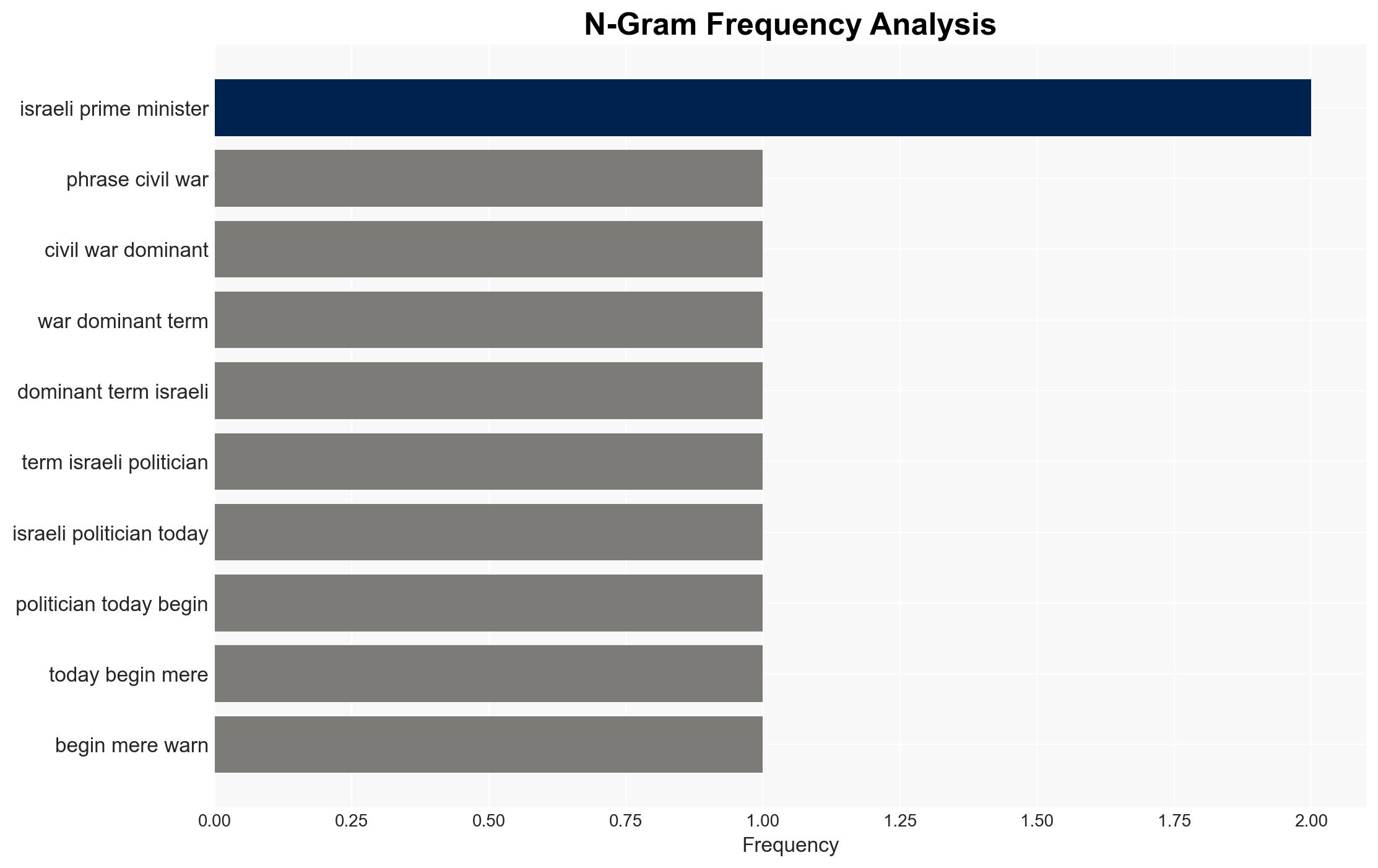Civil War on the Horizon The Ashkenazi-Sephardic Conflict and Israels Future – CounterPunch
Published on: 2025-04-03
Intelligence Report: Civil War on the Horizon The Ashkenazi-Sephardic Conflict and Israel’s Future – CounterPunch
1. BLUF (Bottom Line Up Front)
The potential for civil conflict in Israel is heightened by deep-seated ethnic and political divisions between Ashkenazi and Sephardic communities. Historical dominance by Ashkenazi groups in political and economic spheres is being challenged by a growing Sephardic influence, particularly within right-wing political factions. The current political climate, marked by polarization and mass protests, suggests a risk of escalating tensions. Strategic recommendations include fostering inclusive dialogue and addressing socio-economic disparities to prevent further destabilization.
2. Detailed Analysis
The following structured analytic techniques have been applied for this analysis:
General Analysis
The term “civil war” is increasingly used by Israeli politicians to describe the current political climate. This reflects a significant polarization within Israeli society, primarily along ethnic lines. The Ashkenazi community, historically dominant due to its alignment with Western ideologies and control over key institutions, faces challenges from the Sephardic and Mizrahi communities. These groups, historically marginalized, are gaining influence through political alliances and demographic changes. The rise of political figures like Benjamin and the coalition-building efforts of parties such as Likud highlight this shift. The historical context of ethnic division, coupled with current political dynamics, underscores a potential for conflict if grievances are not addressed.
3. Implications and Strategic Risks
The primary risk is the potential for civil unrest escalating into widespread conflict, which could destabilize the region. The ethnic and political divisions threaten national security and could lead to economic disruptions. The increasing influence of Sephardic groups in illegal settlements and religious institutions may exacerbate tensions. Additionally, external crises, historically used to unify internal factions, may no longer suffice to mask underlying divisions. The strategic risks include a weakened national cohesion and potential international ramifications if the conflict escalates.
4. Recommendations and Outlook
Recommendations:
- Initiate inclusive dialogue between Ashkenazi and Sephardic communities to address historical grievances and socio-economic disparities.
- Implement policies aimed at equitable resource distribution and representation in key institutions.
- Strengthen legal frameworks to prevent ethnic discrimination and promote social cohesion.
Outlook:
In the best-case scenario, proactive measures to address ethnic divisions could lead to increased social harmony and political stability. In the worst-case scenario, failure to address these issues may result in civil conflict and regional instability. The most likely outcome is continued tension with periodic escalations, necessitating ongoing monitoring and intervention efforts.
5. Key Individuals and Entities
The report mentions significant individuals such as Isaac Herzog, Benjamin Netanyahu, and Ehud Olmert. Political entities like the Likud Party and Labor Party are also central to the analysis. These individuals and entities play pivotal roles in shaping the current political landscape and influencing future developments.





